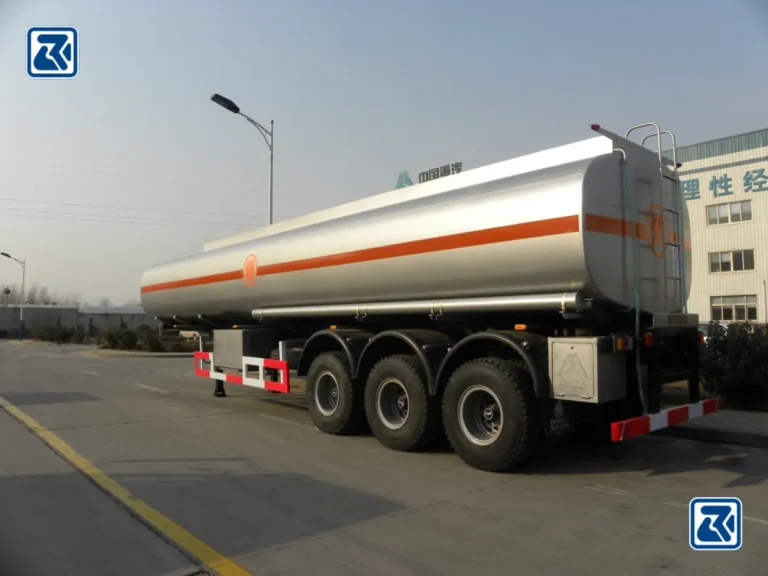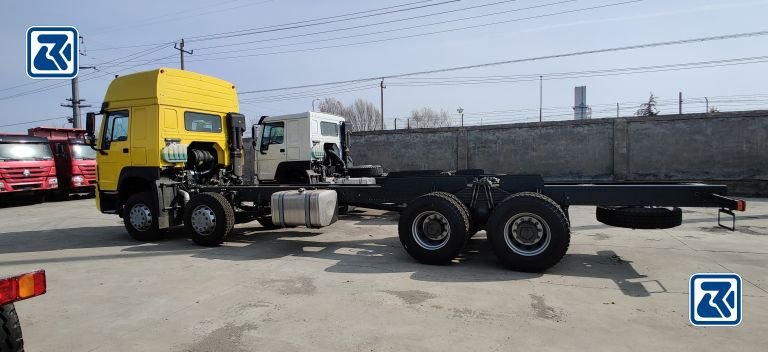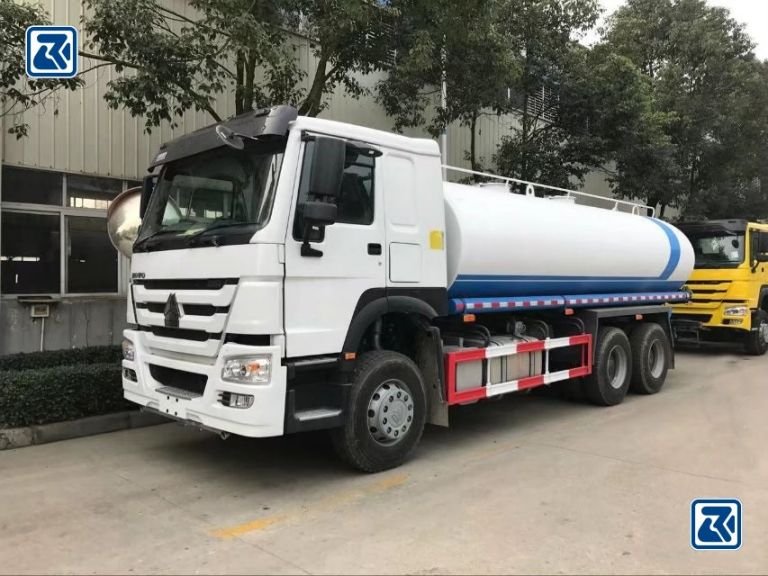HOWO tanker trucks are vital in oil transportation. They ensure the safe and efficient transport of fuel and other liquids. However, over time, tanker trucks may develop leaks. These leaks cause economic losses and harm the environment. Therefore, tanker trucks must be regularly tested and maintained for leaks. Operators and owners must master the skill of “how to detect leaks on HOWO tanker trucks.” This is vital for safety and environmental protection. Next, we will introduce how to detect leaks on HOWO tanker trucks and the related steps in detail.
Table of Contents
The Importance of Leak Detection
Detecting leaks from tanker trucks is crucial. It is linked to protecting the environment and safety in transportation. If a tanker truck leaks during transport, it will cause economic loss. It will also cause serious pollution. Leaking oil can seep into the soil and contaminate groundwater sources, causing long-lasting damage to the ecosystem. Also, oil leaks can cause fires and explosions. They jeopardize the safety of personnel and pose serious risks.
Testing tanker trucks for leaks regularly can find and fix leaks quickly. This prevents the problem from getting worse. Leakage detection helps ensure the tanker’s seals and structure are tight. This reduces oil loss and ensures safe transport.
Common Causes of Leaks
Tanker truck leaks can have many causes. Common ones include bad seals, burst pipes, and tank rust.
Deteriorating Seals
Seals are key components of a tanker truck that prevent oil from leaking and are typically used at connections and around valves. Over time, seals will be affected by temperature changes, oil’s chemical action, and pressure. They will slowly become hard and lose elasticity and sealing performance. Aging seals are unable to effectively stop oil leakage, resulting in small leaks or even large leaks at high pressures. Common manifestations include oil stains and oil contamination around connections and valves.
Ruptured Pipes
Pipes in tanker trucks are responsible for the transportation and circulation of oil. As a result of long-term exposure to high pressure and the external environment, pipelines may become worn, cracked, or ruptured. Mechanical damage, metal fatigue, and corrosion are the main causes of pipeline rupture. Once the pipeline ruptures, oil will leak from the cracks. This is shown by visible oil stains around the pipeline or oil loss during transportation.
Tanker Corrosion
The tank body of a tanker truck is usually made of metal. Metal is prone to corrosion from oil and the outside. Corrosion will weaken the structural strength of the tank body and form holes or cracks, which will lead to oil leakage. The main causes of corrosion include moisture, salts, and chemicals in the oil. Corrosion leaks usually manifest themselves as rust spots, oil stains, and visible signs of corrosion on the surface of the tank.
Preventing these common causes of leaks requires regular inspection and seal replacement. You must also monitor pipe condition and treat and maintain tank corrosion. This will ensure that the whole tanker truck stays in good condition and avoids leaks.

Visual Inspection Methods
Performing a visual inspection of a tanker truck is an important step in ensuring that it is leak-free. The following are detailed inspection methods and procedures:
Inspect the tank
First, inspect the tanker truck’s tank exterior. Look for any visible damage, corrosion, or cracks. Use a flashlight to scrutinize the surface of the tank for rust spots or oil stains, which are signs of a potential leak. Pay special attention to welded joints. Also, look at the corners of the tank. These areas are prone to stress concentrations and cracks.
Check the piping
Next, inspect all the piping in the tanker, including the inlet and outlet pipes and the discharge pipe. Make sure the pipe surfaces are smooth and free of cracks. Check the connections of the pipes to the tank and valves to ensure that there is no looseness or corrosion. If oil or moisture marks are found on the surface of the pipes, leaks may be caused by cracked pipes or poor sealing.
Check fittings and valves
Carefully inspect all fittings and valves to ensure that there is no looseness or damage. Pay particular attention to the condition of the seals, which should show no signs of deterioration, hardening, or breakage. Feel for grease or wetness by lightly touching around the fittings and valves with your hand, if these are found, there may be a leak.
Inspect the chassis and supports
Inspect the tanker truck’s chassis and brackets for any signs of oil stains, rust spots, or metal fatigue. Oil stains on the sump may indicate that oil has leaked from the tank or piping and dripped onto the sump. Make sure brackets are free of visible rust and cracks to prevent structural failure while driving.
Wipe with a paper towel or cloth
Use a clean paper towel or cloth to gently wipe all inspection areas, especially fittings, pipes, and the bottom of the tank. If oil stains appear on the paper towel or cloth, this indicates that there may be a small leak in that area.

Stress Test Methods
Pressure testing checks if a tanker truck can seal and stay strong. It does this by applying high pressure to its system. This way, we can find small leaks and structural issues. Then, we can fix them before they cause leaks. This process ensures the safety and reliability of your tanker truck.
How to perform a pressure test to detect leaks?
Preparation: Ensure the tanker truck is free of oil. It must be completely emptied and cleaned. Check that all valves and pipes are tight. This is in case something happens during the test.
Connect the pressure test equipment: Connect the air inlet of the pressure test equipment to the oil inlet of the tanker or another suitable location. Check that the connection doesn’t leak and that all seals are intact.
Apply pressure: Increase the pressure slowly using a manual or automatic pump. Raise it to 1.5 times the normal pressure. Maintain pressure for some time (usually 15-30 minutes) and observe that the gauge reading stabilizes.
Check for leaks: While pressure is being applied, inspect the tanker truck’s tank, piping, and fittings for leaks. Use soapy water to check all fittings and seals. If bubbles develop, they are leaks.
Record and Dispose: Record the pressure test results and any found leaks. If a leak is found, mark the location. Then, reduce the pressure and repair or replace the damaged part. Finally, retest.
Precautions for using pressure test equipment
During pressure testing, keep all personnel at a safe distance. This is to avoid injury from excessive pressure.
When using the pressure test equipment, follow the equipment manual closely. Do this to make sure the equipment is firmly connected. This prevents misjudgment from equipment failure.
After the pressure test, release the pressure slowly. This prevents damage from sudden pressure drops.
Detection using specialized equipment
Specialized equipment is used to detect leaks from tanker trucks. It mainly includes ultrasonic and infrared detectors. These devices can quickly find small leaks. They do so with high accuracy. This avoids oil waste and pollution.
Ultrasonic detector: When using an ultrasonic detector, first make sure the device is fully charged and calibrate the ultrasonic detector. Then, place the ultrasonic sensor on the surface of the tanker’s pipes, joints, and tanks. Move the sensor slowly and listen and look at the device’s display. An ultrasonic detector has many advantages. It can quickly find small leaks. It is easy to use and does not require stopping the tanker.
Infrared Detectors: When using an infrared detector, make sure it is in proper working order and clean the lens to ensure accuracy. Move the infrared detector around the tanker. Scan the tank, piping, and joints. Watch for temperature changes on the device’s display. It will often show abnormal temperatures at the leak. The infrared detector has many advantages. It can detect the tanker without touching it. It works well in hot or hard-to-reach areas. And it is fast and accurate.
Interpreting the results: The ultrasonic detector detects an abnormal ultrasonic signal. This signal is usually a sharp sound or an abnormal reading. It means a leak is present. Mark the leak and proceed with further inspection and repair. Look for areas of temperature abnormality by observing the thermal image of the infrared detector. If you find areas with big temperature differences, there may be leaks. Record these spots and inspect them closely.
Take measures: Mark the leaks found for subsequent repair. The inspection will determine the results. Take the right repairs, like replacing seals or fixing pipes. Do tank maintenance if needed. After repair, the tank is inspected again using specialized equipment to ensure that the leak has been fully resolved. Ultrasonic and infrared detectors can find leaks in tanker trucks. They do so efficiently and accurately. This ensures the safety and environmental protection of oil transportation.
Emergency response after a leak
When a tanker truck is found to be leaking, it is vital to take emergency treatment right away. This is to prevent pollution and protect people.
Specific steps
Close valves: Close all relevant valves quickly to stop the flow of oil and prevent further leakage. Ensure that the closure process is quick and effective to prevent the oil from spreading.
Clean up the spill area: Use absorbent pads, sand, or other adsorbent material to contain and absorb the spilled oil as quickly as possible. Avoid oil entering sewers or water sources to prevent contamination of water bodies. Put the adsorbent material into sealed containers promptly. This prevents secondary contamination.
Notify relevant departments: Report the spill to the internal safety management department right away. Then, notify the environmental protection department and the emergency response team as local rules require. They will provide professional guidance and support to help deal with the spill.
Precautions to ensure the safety of personnel
Wear Personal Protective Equipment (PPE): All staff must wear proper Personal Protective Equipment (PPE). This includes gloves, protective clothing, and eyewear. It is to avoid touching the oil when handling the spill.
Maintain a safe distance: During spills, non-essential personnel should stay away. They should do so to avoid breathing harmful gases or touching the oil. Set up a perimeter to prevent uninvolved personnel from entering the hazardous area.
Prevent ignition sources from approaching: Oil is flammable, so ignition sources must be prevented from approaching the spill site, and smoking or the use of open flames is prohibited. Ensure that all electrical equipment is kept away from the spill area to avoid fire or explosion.
By quickly closing valves and cleaning up the spill area. Also, by telling the relevant authorities and following safety rules. This can effectively control the spill’s effects. It protects the environment and personnel.

Conclusion
Detecting and stopping leaks from HOWO tanker trucks is vital. It ensures the safe and green transport of oil products. You can find leaks by understanding common causes. Do this by doing visual inspections and pressure tests. Also, use specialized equipment to test.
HOWO Special Truck Ltd provides thorough inspections and maintenance support. We ensure that your tanker trucks are always in the best condition. Regular inspection and maintenance extend the vehicle’s life. They also improve efficiency and cut costs. We encourage our readers to notice tanker truck leaks and how to prevent them. They should also do regular maintenance to keep oil transportation safe, green, and efficient.
FAQ
Tanker trucks often leak. You can tell by oil stains, grease, wetness, or odors in the tank, piping, and fittings. In addition, unusual oil consumption during transportation is a possible sign of a leak.
It is possible to carry out basic visual inspections and simple leak tests such as checking for air bubbles at joints using soapy water. However, it is recommended to inspect it regularly with professional equipment. This is to ensure accuracy and safety.
When using professional equipment like ultrasonic and infrared detectors, check that the equipment is calibrated. Also, check that the operator is trained and the equipment is kept clean. Pay attention to changes in the readings and images during the test. And, operate at a safe distance.
HOWO Special Truck Ltd offers a full leak detection service. It includes testing with special equipment. It also includes regular maintenance, troubleshooting, and technical support. We also provide detailed maintenance manuals. We provide training too. These help customers manage and keep up their tankers.




